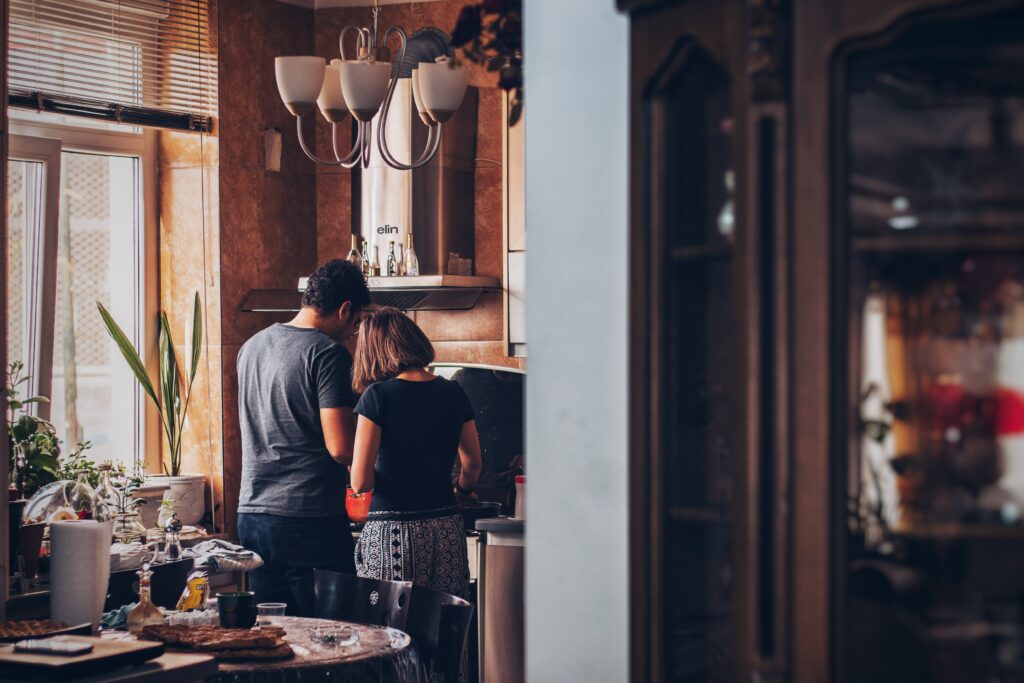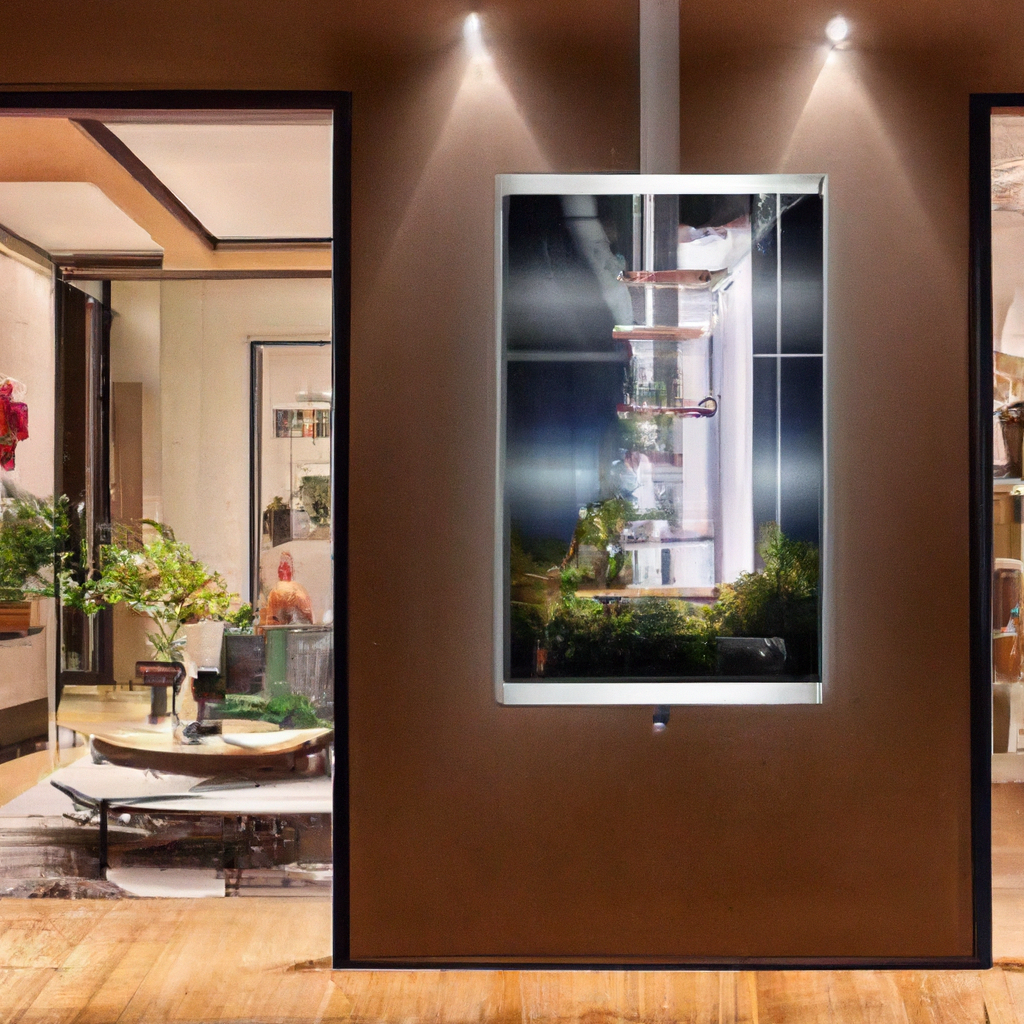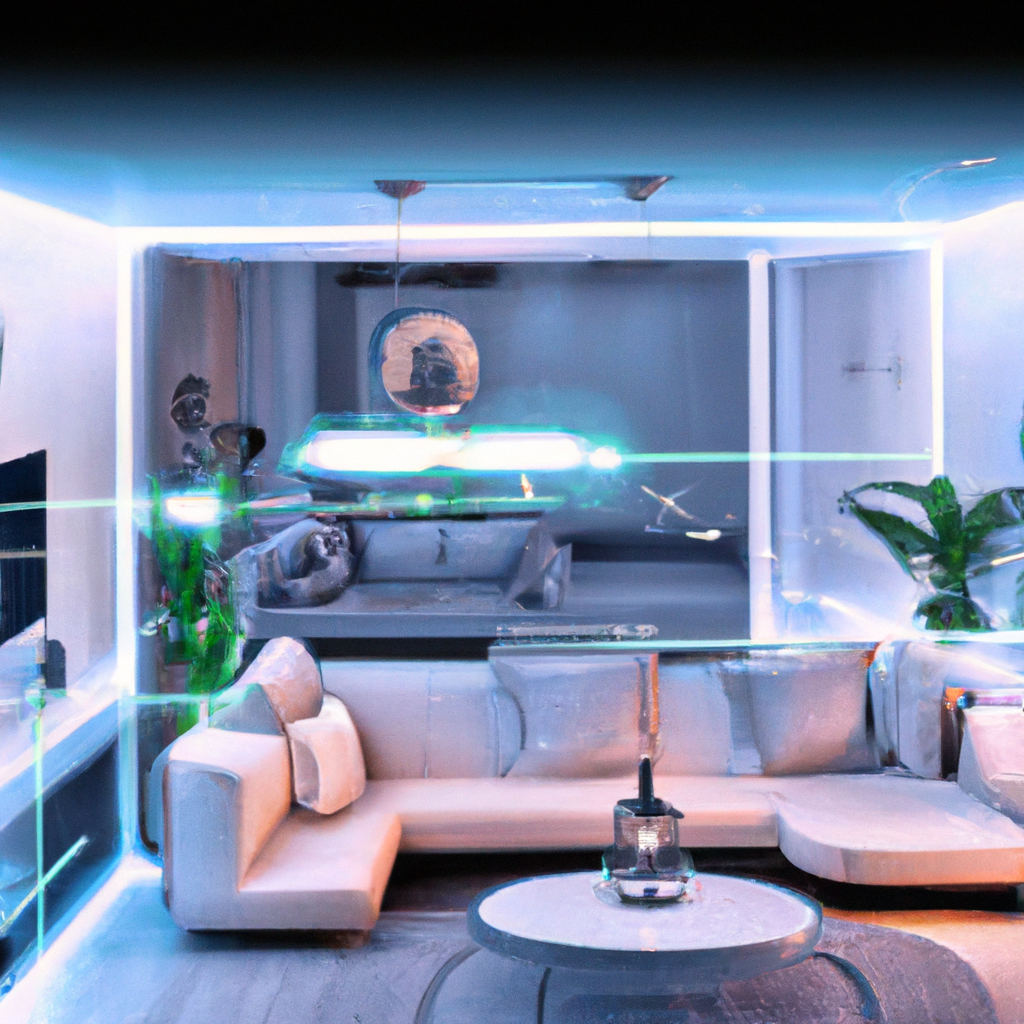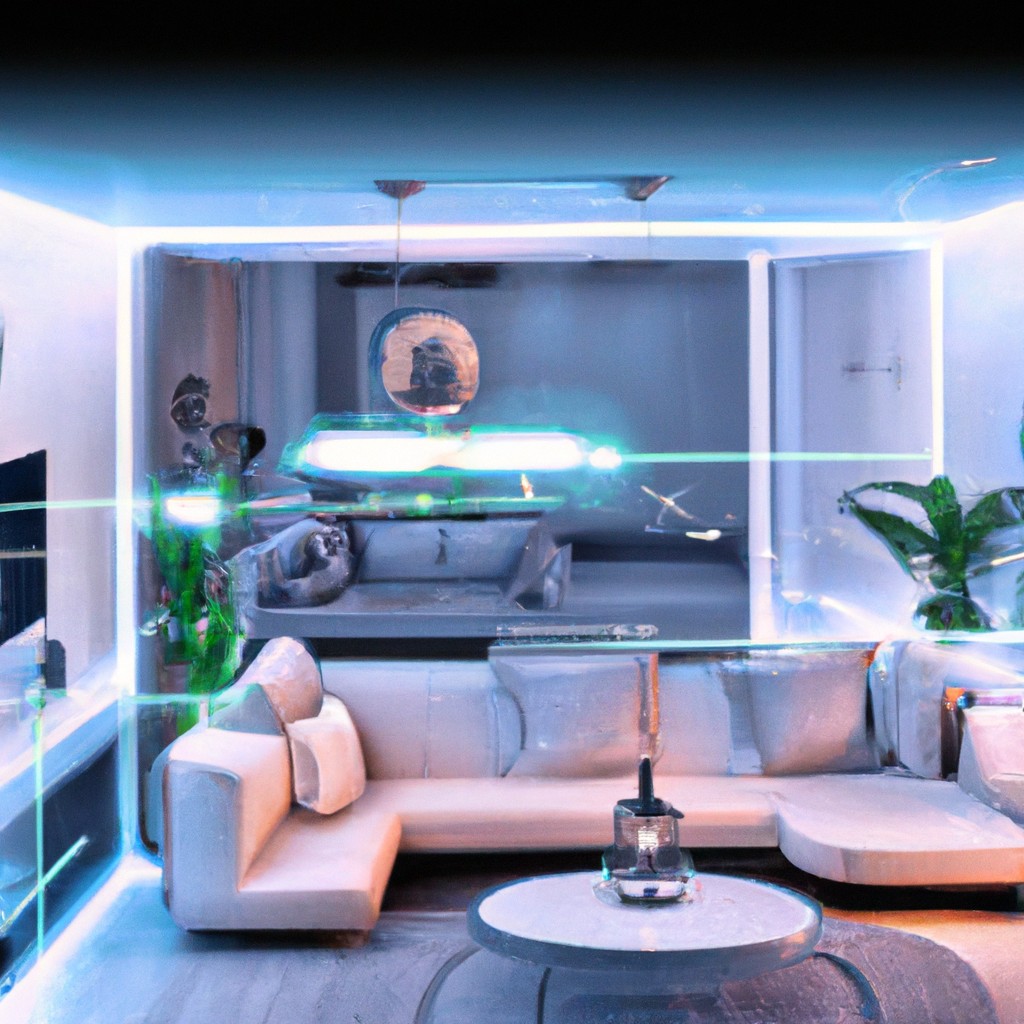In today’s fast-paced world, smart home automation has become a convenient and efficient way to manage our living spaces. From controlling the lighting and temperature to streaming our favorite shows with just a voice command, the possibilities seem endless. However, with so many options and features available, it can be overwhelming to navigate and organize all these automation routines in the living room. Luckily, there are some simple yet effective practices that can help you seamlessly manage your smart home, making your living room the ultimate hub of comfort and convenience. Whether you’re new to smart home technology or a seasoned pro, this article will provide you with valuable insights to optimize your living room automation routines.

Set Up Hub and Devices
Choose a Smart Hub
Before diving into setting up automation routines in your living room, it’s important to choose the right smart hub. A smart hub is the central control unit that connects all the smart devices in your home. There are many options available in the market, so consider factors such as compatibility, ease of use, and the number of supported devices. Popular choices include Amazon Echo, Google Nest Hub, and Samsung SmartThings.
Connect Smart Devices
Once you have chosen a smart hub, it’s time to connect your smart devices. Smart devices include things like smart lights, smart thermostats, and smart speakers. Make sure that the devices you select are compatible with your chosen smart hub. Follow the manufacturer’s instructions to connect each device to your hub and ensure they are discovered and functioning correctly. This will allow you to control and automate these devices from your hub’s interface.
Plan the Automation
Identify Daily Routine
To effectively automate your living room, it’s essential to identify your daily routine. Observe how you typically use the living room throughout the day. Note down activities such as watching TV, reading, or relaxing. This will help you understand which devices and actions can be automated to enhance your overall experience. Understanding your daily routine is the foundation for creating useful automation routines.
Analyze Room Layout
Take some time to carefully analyze the layout of your living room. Consider factors such as the placement of furniture, electrical outlets, and the existing infrastructure. This analysis will help you determine the placement of smart devices and identify any potential challenges or limitations. For example, if you plan to automate your lighting, knowing the location of light switches and outlets will be crucial in your planning process.
Determine Required Actions
Once you have a clear understanding of your daily routine and the layout of your living room, it’s time to determine the specific actions you want to automate. For example, you may want to automate turning on the lights when you enter the room, adjusting the temperature based on occupancy, or playing your favorite music when you sit down to relax. List out all the actions you would like to automate to make your living room more convenient and enjoyable.

Create Automation Schedule
Define Time-based Triggers
Creating a schedule for your automation routines can greatly enhance the functionality of your smart home. Start by defining time-based triggers for various actions. For instance, you can schedule the lights to turn on automatically in the evening or set the thermostat to adjust to a certain temperature at specific times. This will ensure that your living room is comfortable and ready for your desired activities without manual intervention.
Consider Occupancy Sensors
In addition to time-based triggers, consider incorporating occupancy sensors into your automation schedule. These sensors detect the presence or absence of people in the room and can trigger corresponding actions. For example, you can have the lights turn off automatically when no one is in the living room for a certain period of time. Occupancy sensors add an extra layer of convenience and energy efficiency to your automation routines.
Set Up Custom Scenes
Custom scenes allow you to create predefined settings for multiple devices with a single command. For example, you can create a “Movie Night” scene that dims the lights, turns on the TV and sound system, and closes the blinds. These scenes can be activated using voice commands or scheduled to occur at specific times. Think about the different scenarios you encounter in your living room and set up custom scenes to effortlessly transition between them.
Use Voice Control Systems
Integrate Voice Assistants
Voice assistants such as Amazon Alexa, Google Assistant, and Apple Siri are becoming increasingly popular for controlling smart home devices. Integrating a voice assistant into your living room automation setup allows you to control your devices using natural language commands. From adjusting the lights to playing your favorite music, voice assistants make it easy to interact with your smart home technology.
Establish Proper Voice Commands
To make the most of voice control, establish proper voice commands for your smart devices and actions. Ensure that the commands are clear, concise, and easy to remember. For example, you can say “Hey Google, turn off the lights” instead of a lengthy and confusing phrase. Take some time to familiarize yourself with the voice assistant’s capabilities and customize the commands as per your preference.

Group Devices and Actions
Categorize Devices
As your collection of smart devices grows, it becomes important to categorize them for easier management. Start by organizing your devices based on their functionality or location in the living room. For example, you can have a category for lighting, entertainment, and security devices. This classification will allow you to quickly locate and control specific devices or groups of devices when needed.
Create Device Groups
Once you have categorized your devices, create device groups to further streamline your automation routines. Device groups allow you to control multiple devices simultaneously with a single command. For instance, you can create a group named “Living Room Lights” that includes all the smart lights in your living room. This way, you can turn on or off all the lights in the living room with a single voice command or through your smart hub’s interface.
Group Actions
In addition to grouping devices, consider grouping actions that are frequently used together. For example, you can create a group named “Evening Routine” that includes actions such as dimming the lights, adjusting the thermostat, and playing relaxing music. Grouping actions allows you to trigger multiple actions with a single command, making it convenient and efficient to set the desired ambiance in your living room.
Incorporate Remote Control
Install Mobile Apps
Most smart hubs and devices come with dedicated mobile apps that allow you to control and manage them remotely. Install the respective apps on your smartphone or tablet to gain access to your living room automation routines from anywhere. These apps provide a user-friendly interface to monitor and control your devices, create schedules, and adjust settings on the go.
Configure Remote Access
To ensure smooth remote access to your living room automation, configure the necessary settings on your smart hub and devices. This usually involves enabling remote access and securely connecting your hub to the internet. Follow the instructions provided by the manufacturer to set up a secure and reliable remote access connection. Once configured, you can enjoy the convenience of controlling your living room automation even when you’re away from home.

Utilize Smart Remotes
Choose a Smart Remote
If you prefer a physical remote control for your living room automation, consider investing in a smart remote. Smart remotes are designed to control multiple devices and support different protocols like infrared (IR) and radio frequency (RF). Look for a smart remote that is compatible with your smart hub and offers the necessary functions to control your devices effectively.
Pair with Hub and Devices
Once you have chosen a smart remote, pair it with your smart hub and devices. Follow the pairing instructions provided by the manufacturer to establish a connection between the remote, hub, and your smart devices. This will allow you to control your living room automation using the smart remote, providing a familiar and tactile experience.
Maintain and Update
Regularly Test the System
To ensure the smooth functioning of your living room automation, it’s important to regularly test the system. Check if all the devices are responding correctly to the automation routines and troubleshoot any issues that arise. This will help you identify and fix any malfunctions or communication problems promptly, ensuring a seamless and enjoyable smart home experience.
Update Firmware and Software
Keeping your smart hub and devices up to date is crucial for security and performance reasons. Manufacturers often release firmware and software updates that address vulnerabilities, add new features, and improve compatibility. Check for updates regularly and follow the instructions provided by the manufacturer to update the firmware and software of your smart hub and devices. This will help keep your living room automation system running smoothly and protect it from potential cybersecurity risks.

Ensure Security and Privacy
Secure the Wi-Fi Network
Since your smart home devices rely on your Wi-Fi network, securing it is essential to protect your living room automation. Change the default network name (SSID) and password to unique and strong credentials. Regularly update your router’s firmware to ensure you have the latest security patches. Consider enabling additional security features such as network encryption (WPA2/WPA3) and guest network segregation to minimize the risk of unauthorized access to your smart devices.
Use Strong Passwords
In addition to securing your Wi-Fi network, it’s crucial to use strong passwords for your smart hub and associated accounts. Avoid using common or easily guessable passwords and enable multi-factor authentication whenever possible. Strong passwords and additional security measures add an extra layer of protection to your living room automation, safeguarding your privacy and preventing unauthorized access.
Update Firmware Regularly
Regularly updating the firmware of your smart devices is crucial for maintaining security. Manufacturers often release firmware updates that address vulnerabilities and fix bugs. Check for firmware updates for your smart devices and follow the provided instructions to ensure you have the latest version installed. Regular updates will help mitigate security risks and ensure the long-term functionality of your living room automation.
Consider User Preferences
Customize Automation
Every individual has unique preferences and requirements when it comes to their living room automation. Take the time to customize your automation routines based on your specific needs and preferences. Fine-tune the timings, actions, and triggers to align with your daily routine and desired ambiance. Personalization will ensure that your living room automation enhances your lifestyle and provides maximum convenience and comfort.
Adjust Lighting and Temperature
Lighting and temperature play a significant role in setting the mood and ambiance of your living room. Take advantage of your smart lighting and thermostat to adjust these elements to your liking. Experiment with different lighting scenes, color temperatures, and brightness levels to create the perfect atmosphere for different activities. Similarly, customize the temperature to ensure optimal comfort throughout the day. With the ability to fine-tune these settings, you can create a living room environment that suits your preferences and enhances your overall experience.
By following these best practices, you can effectively organize and manage smart home automation routines in your living room. From choosing the right smart hub to customizing automation based on your preferences, these steps will help you create a comfortable and convenient living room that seamlessly integrates with your smart devices. Enjoy the benefits of a smart home and experience the future of living right in your own living room!
